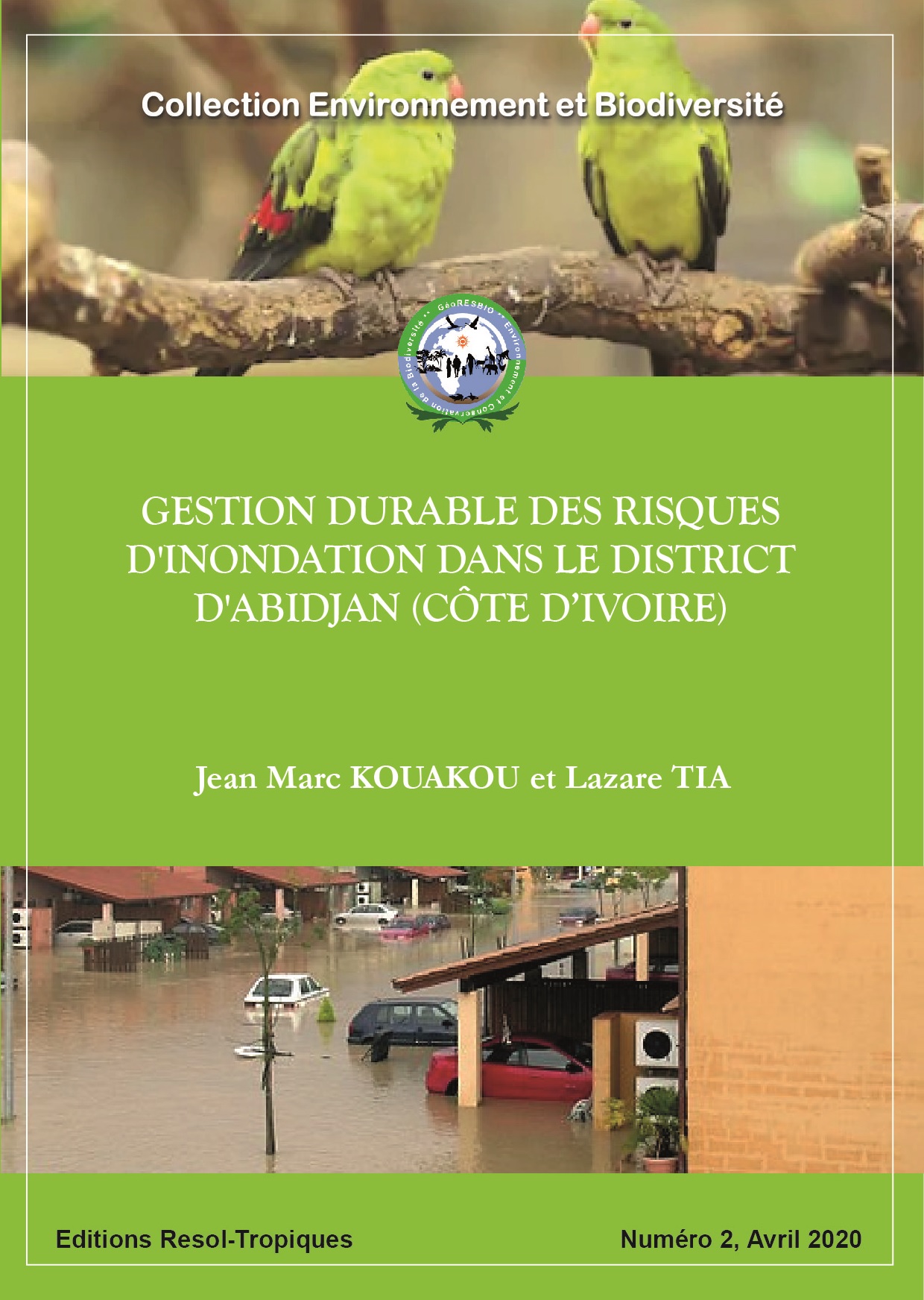Yao Jean Marc Kouakou, Lazare Tia
Collection Environnement et Biodiversité, Editions Resol-Tropiques, 2020 - 101 pages
Floods accounted for 80% of natural disasters worldwide between 1996 and 2006; 26% of the total number of hydro-climatic disasters recorded in Africa between 1971 and 2001. In the district of Abidjan, municipalities are frequently affected by floods with damaging consequences. The objective of the study is to contribute to the prevention of flood risks in the district of Abidjan through the scenario of rainfall variations. The GIS processing enables the determination of hazard zones, levels of stakes and areas at risk of flooding. Nicholson's Mean Rainfall Index (MPI) enables the analysis of rainfall variability. Climate simulation is carried out using the MIROC-ESM model, under the RCP 8.5 scenario. The results show that the communes in the district are differently exposed to the risk of flooding. The change in seasons in the district is manifested by a decrease in annual mean rainfall (-243 mm), longer rainy seasons and a shortening of the dry seasons. This trend predicts the occurrence of exceptionally heavy and unexpected rains during the usually dry months. This may lead to increasingly unpredictable and therefore very dangerous flooding in the district by 2040.
Published: 2020-04-15

